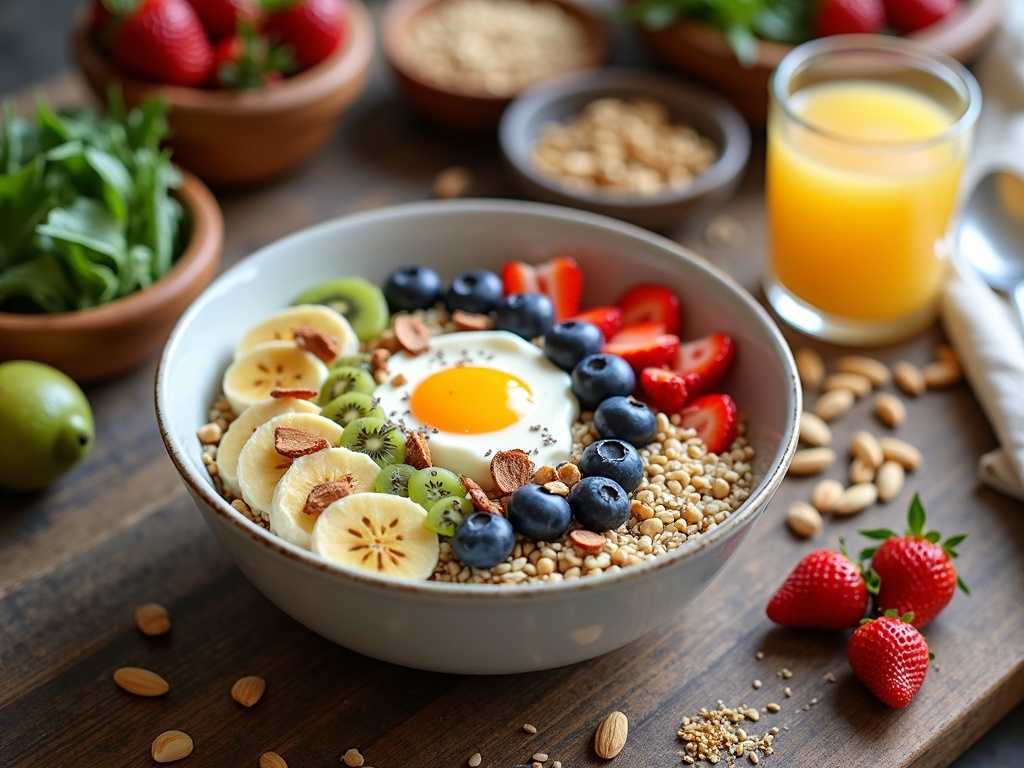Whole foods breakfasts deliver essential nutrients that fuel both body and mind. Studies confirm that people who eat breakfast regularly meet their daily nutritional needs better than those who skip morning meals. Starting my day with nutrient-dense whole foods helps stabilize blood sugar, sharpen concentration, and cut cravings for less nutritious options throughout the day.
Find In This Article
Key Takeaways
- Only 31% of adults eat breakfast daily, missing crucial health benefits that support overall wellness and nutrition.
- Whole foods breakfasts jumpstart metabolism, stabilize blood sugar levels, and improve cognitive function during critical morning hours.
- Creating balanced breakfast bowls with whole grains, fresh fruits, quality proteins, and healthy fats provides sustained energy without spikes and crashes.
- Prepping breakfast components ahead of time (batch cooking grains, pre-chopping fruits) makes maintaining a whole foods morning routine manageable even on busy days.
- Common breakfast mistakes include inadequate hydration, poor portion control, insufficient protein, and relying on processed foods instead of whole alternatives.
Why Your Body Needs a Whole Foods Breakfast
Starting your day with a nutritious breakfast isn’t just a suggestion—it’s a foundation for good health. Yet surprisingly, only 31% of adults eat breakfast daily, missing out on critical benefits that fuel our bodies and minds.
The Science-Backed Benefits
The morning meal plays a powerful role in your daily wellness. According to CDC data, those who eat breakfast regularly are more likely to meet their daily nutrient needs compared to breakfast-skippers. This translates to better overall nutrition and fewer deficiencies that can impact health.
I’ve found that incorporating healthy breakfast options makes a noticeable difference in daily functioning. A morning meal rich in whole foods provides essential fuel for energy levels and cognitive function, helping you stay sharp and focused. It’s no wonder that 50% of adults consider breakfast the most important meal of the day.
The benefits of a whole foods breakfast extend far beyond the morning hours. Starting your day with nutrient-dense foods helps:
- Jumpstart metabolism, which can aid in maintaining a healthy weight
- Stabilize blood sugar levels, preventing mid-morning crashes
- Reduce cravings for less nutritious foods throughout the day
- Improve concentration and memory during critical morning work hours
- Support muscle recovery and growth after overnight fasting
What you eat matters just as much as whether you eat. Nutritious breakfast foods like whole grains, fruits, vegetables, and lean proteins deliver sustained energy without the spikes and crashes that come from processed options.
I’ve personally experienced the difference between rushing out with a quick processed breakfast bar versus taking time for protein-rich overnight oats or a savory oatmeal bowl. The whole foods approach provides lasting energy that carries me through morning meetings and workouts with steady focus.
The long-term impact is even more significant. CDC research shows that consistent breakfast eaters face reduced risks of chronic diseases like heart disease, diabetes, and obesity. The nutrients you consume at breakfast—fiber, vitamins, minerals, and antioxidants—create a protective effect that accumulates over time.
By prioritizing a whole foods breakfast, you’re not just making a daily choice—you’re investing in your long-term health and creating habits that support vitality and wellness for years to come.
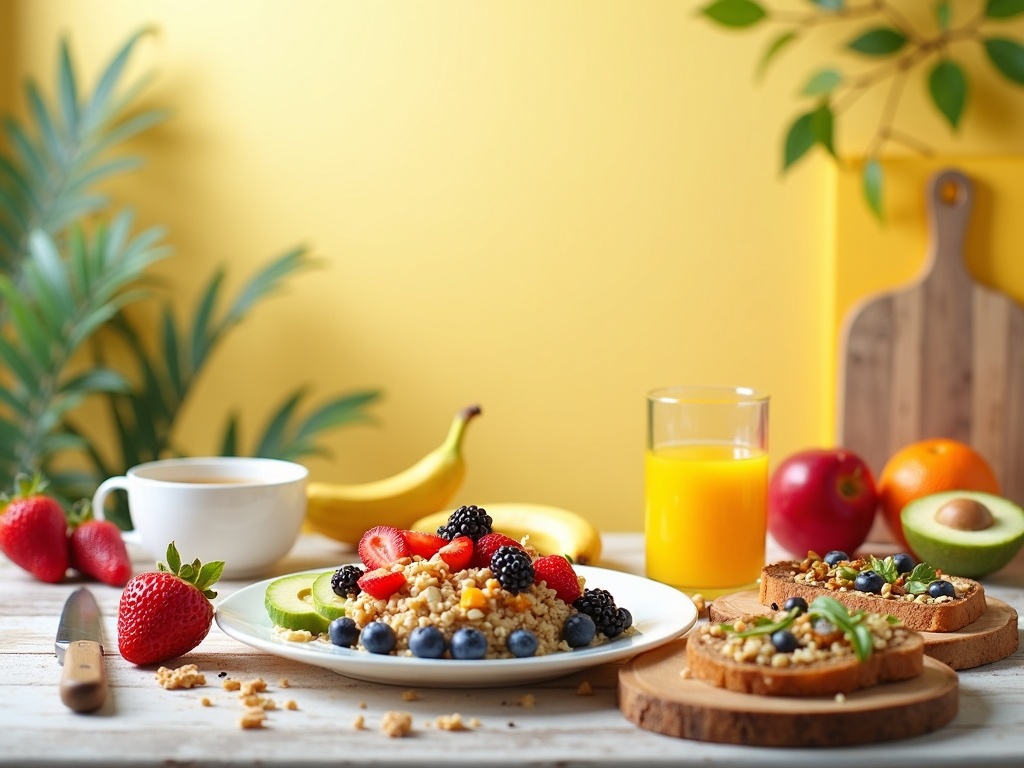
Build Your Perfect Breakfast Bowl
Creating a breakfast bowl from whole foods is one of the simplest ways to fuel your morning with balanced nutrition. I’ve found that starting with the right foundation and building up with nourishing ingredients makes all the difference in creating a satisfying morning meal.
The Foundation and Flavor Builders
The base of your breakfast bowl sets the stage for everything else. I prefer whole grains because they’re packed with fiber and provide steady energy throughout the morning. Options include:
- Steel-cut or rolled oats for a classic, comforting base
- Protein-rich quinoa for a lighter texture
- Hearty farro for a chewier, nuttier experience
To cook your grains perfectly, use a 2:1 water-to-grain ratio. For oats, this creates that ideal creamy consistency without becoming too soupy or too dry.
After establishing your base, it’s time to layer in flavor and nutrition. Fresh fruits add natural sweetness and vital nutrients – berries deliver antioxidants, bananas offer potassium, and diced apples bring crisp texture and fiber. I like to mix seasonal options for variety in my healthy breakfast routine.
Protein is essential for keeping hunger at bay until lunch. Adding a handful of nuts or seeds boosts satisfaction and adds healthy fats:
- Sliced almonds provide crunch and vitamin E
- Chia seeds offer omega-3 fatty acids and expand for extra fullness
- Walnuts contribute heart-healthy fats and interesting texture
For creaminess and additional protein, Greek yogurt makes an excellent addition. If you prefer plant-based options, a splash of almond milk works wonderfully, especially with high protein overnight oats preparations.
Rather than refined sugar, I use natural sweeteners sparingly:
- Raw honey offers antimicrobial properties and rich flavor
- Pure maple syrup provides a distinctive taste with minerals
- Mashed banana can sweeten naturally while adding nutrition
Spices transform your breakfast bowl from basic to extraordinary. A dash of cinnamon not only enhances flavor but may help regulate blood sugar. Vanilla extract adds warmth, while turmeric brings anti-inflammatory benefits along with a golden hue. These additions make whole 30 breakfast options more exciting.
The assembly process matters almost as much as the ingredients. I start with the warm grain base, then add a portion of protein like yogurt or nuts. Next comes fruit, additional toppings, and finally a light drizzle of sweetener and sprinkle of spices. This layering method ensures every bite contains a mix of flavors and textures.
For those who enjoy savory options, consider creating savory oatmeal bowls by substituting vegetables, herbs, and even a soft-boiled egg for the sweeter ingredients.
The beauty of breakfast bowls is their adaptability to your personal preferences and nutritional needs. By focusing on healthy breakfast foods as your ingredients, you’re setting yourself up for sustained energy and satisfaction.
I’ve noticed that preparing components ahead of time (pre-chopping fruits, toasting nuts, or cooking grains in batches) makes assembly quick on busy mornings. For the freshest experience, serve your creation immediately after assembling, though a healthy breakfast bowl can also be prepared the night before for convenience.
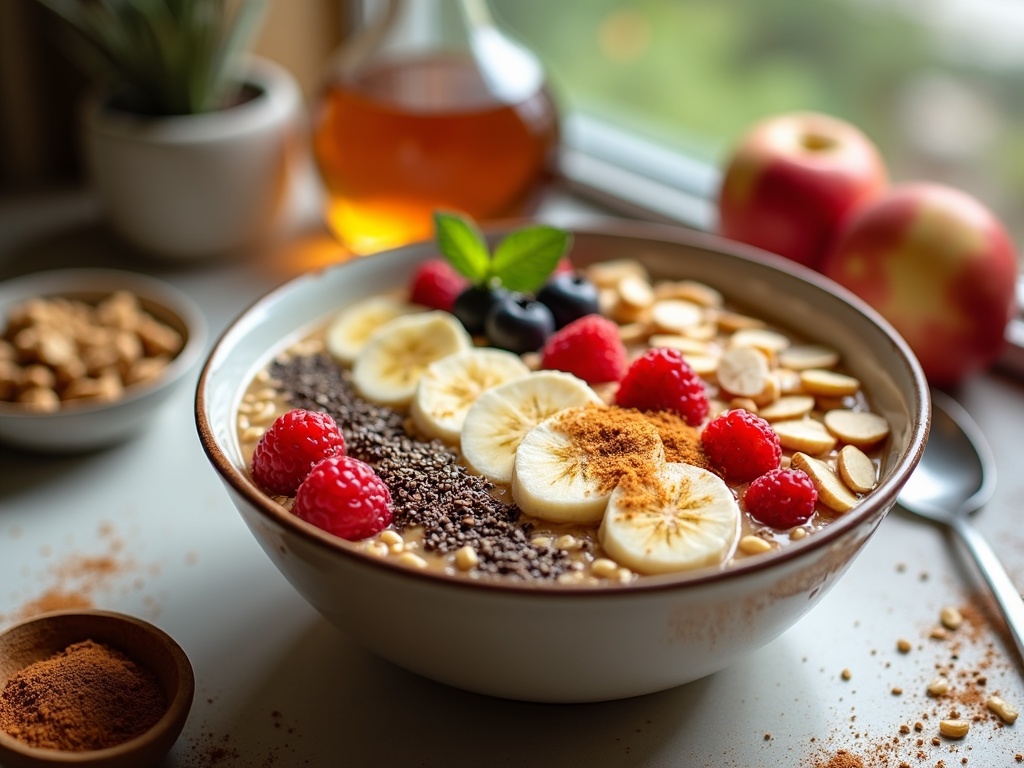
Quick and Easy Variations
Starting my day with a nutrient-packed breakfast makes all the difference in my energy levels and focus. I’ve found that preparing whole foods breakfasts doesn’t have to be complicated or time-consuming. These quick variations take minimal effort but deliver maximum nutrition.
Sweet Morning Options
A smoothie bowl is perfect for busy mornings when I need something refreshing yet filling. I start with a simple base of spinach, banana, and almond milk blended until smooth. The magic happens with the toppings—fresh berries, sliced kiwi, a sprinkle of hemp seeds, and a drizzle of almond butter create a breakfast that’s as beautiful as it is nutritious. For variety, I sometimes swap spinach for kale or add a scoop of plant protein.
Overnight oats with protein boosts have revolutionized my morning routine. Before bed, I mix rolled oats with chia seeds, Greek yogurt, and a splash of almond milk in a jar. By morning, the mixture transforms into a creamy, ready-to-eat breakfast. I top it with sliced bananas, blueberries, and a handful of chopped walnuts. This make-ahead option saves precious morning minutes while providing lasting energy.
Quinoa porridge offers a protein-rich alternative to traditional oatmeal. I simmer quinoa in coconut milk until tender, then stir in a touch of cinnamon and vanilla. Topped with sliced mango, crushed pistachios, and a drizzle of honey, this healthy breakfast option feels indulgent despite being packed with whole foods. The coconut milk adds creaminess without dairy, making it suitable for various dietary needs.
Savory Start Selections
For mornings when I crave something savory, a breakfast bowl hits the spot. I start with a base of leftover brown rice or quinoa, then add halved cherry tomatoes, sliced avocado, and a perfectly poached egg. A sprinkle of microgreens, hemp seeds, and a light drizzle of olive oil completes this savory breakfast bowl. The combination provides sustained energy through complex carbs, healthy fats, and quality protein.
The breakfast burrito offers flexibility and portability for hectic mornings. I warm a whole grain tortilla and fill it with scrambled eggs, black beans, diced avocado, and a small handful of fresh cilantro. What makes this option special is its adaptability—I can use whatever vegetables I have on hand, from bell peppers to spinach. For meal prep, I make several at once, wrap them individually, and freeze them for grab-and-go breakfasts throughout the week.
These healthy breakfast ideas rely on whole, minimally processed ingredients while remaining practical for everyday life. I find that having several go-to options prevents breakfast boredom and ensures I don’t skip this important meal.
Each variation can be customized based on seasonal availability or personal preference. The key is focusing on:
- Whole grains (oats, quinoa, brown rice)
- Fresh fruits and vegetables
- Quality proteins (eggs, Greek yogurt, seeds)
- Healthy fats (avocado, nuts, seeds)
By keeping these building blocks on hand, I can mix and match to create compliant breakfast options that support my health goals without sacrificing flavor or adding stress to my morning routine.
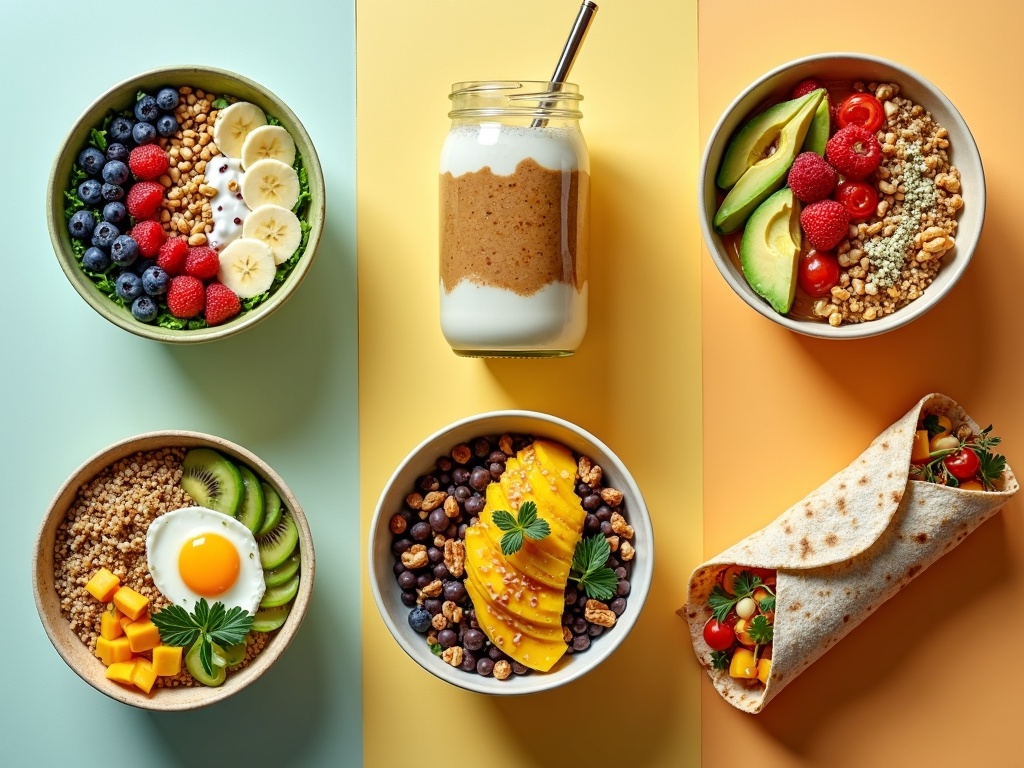
Smart Prep Solutions
Preparing breakfast ahead of time is a game-changer for maintaining a consistent whole foods morning routine. I’ve found that strategic prep work not only saves precious morning minutes but also helps me stick to my nutritional goals throughout the week.
Time-Saving Preparation Techniques
Batch cooking grains on weekends has transformed my breakfast routine. I cook large portions of steel-cut oats, quinoa, or brown rice, then portion them into containers for quick reheating. This approach gives me a blank canvas to add fresh toppings each morning while still enjoying a healthy breakfast that satisfies.
Pre-chopping fruits at the beginning of the week creates a convenient grab-and-go situation. I store washed berries, sliced mangoes, and cubed melons in glass containers to top my high protein overnight oats or eat alongside other breakfast options.
The key to maintaining freshness lies in storage techniques. I store prepared ingredients separately in airtight containers to prevent sogginess and extend shelf life. For example, toasted nuts and seeds stay crunchy when kept away from moisture, while cooked sweet potatoes maintain their texture when refrigerated on their own.
Nutritional Planning Strategies
Planning portions ahead helps me achieve proper nutrition balance. I use simple guidelines to create a healthy breakfast that includes:
- 1/4 plate of complex carbohydrates (whole grains or starchy vegetables)
- 1/4 plate of protein (eggs, Greek yogurt, or plant-based options)
- 1/2 plate of fruits and non-starchy vegetables
- A small serving of healthy fats (avocado, nuts, seeds)
Food sensitivities require special consideration during prep sessions. I’ve learned to prepare alternatives for common allergens—using coconut yogurt instead of dairy, creating grain-free granola for those avoiding gluten, or preparing savory oatmeal options for those who prefer less sweet breakfasts.
My favorite tip is creating a “breakfast bar” in your refrigerator. I designate a shelf with prepped components that can be mixed and matched each morning. This approach provides variety while still featuring healthy breakfast foods that align with Whole 30 breakfast principles or other whole food approaches.
By investing 1-2 hours on weekends for thoughtful preparation, I’ve found that staying committed to whole foods breakfasts becomes significantly easier, even on the busiest mornings.
Common Mistakes to Avoid
Starting your morning with a healthy breakfast using whole foods can set a positive tone for your entire day, but several common pitfalls might undermine your efforts. I’ve noticed that many people make the same mistakes when preparing their morning meals, so let’s address these issues head-on.
Breakfast Blunders That Sabotage Your Health Goals
Not drinking enough water alongside breakfast is perhaps the most overlooked mistake. After hours of sleep, your body is naturally dehydrated, so pairing your meal with a large glass of water helps jump-start your metabolism and aids digestion. I find that keeping a water bottle next to my bed reminds me to hydrate before even heading to the kitchen.
Portion control presents another challenge, especially with calorie-dense foods like nuts, seeds, and nut butters. While these items offer excellent nutrition, it’s easy to consume too much. A tablespoon of almond butter contains approximately 100 calories – measure rather than eyeball portions to stay on track.
Many breakfast plates lack adequate protein, which is essential for satiety and stable energy levels. A complete breakfast should include protein sources like eggs, Greek yogurt, or plant-based options such as tofu scrambles. High-protein overnight oats can be an excellent make-ahead solution for busy mornings.
Morning rush often leads to poor food choices. I’ve found that preparing components of my whole food breakfast the night before makes a huge difference. Consider prepping fruit, portioning yogurt, or trying make-ahead options like chia pudding.
Ignoring food sensitivities can turn your nutritious breakfast into a source of discomfort. Pay attention to how your body responds to common breakfast ingredients like dairy, gluten, or eggs. You might need to explore alternatives like savory oatmeal or grain-free options.
Perhaps the biggest mistake is using processed items instead of whole food alternatives. Many commercial breakfast foods contain added sugars, preservatives, and artificial ingredients. Instead, focus on fresh fruits, vegetables, whole grains, and quality proteins. Replace flavored instant oatmeal with plain oats topped with fresh berries, or swap breakfast sausage for lean chicken breast seasoned with herbs.
By avoiding these common mistakes, your whole foods breakfast can truly deliver the nutrition and energy you need to start your day right. The small adjustments in your morning routine can lead to significant improvements in your overall health and wellbeing.
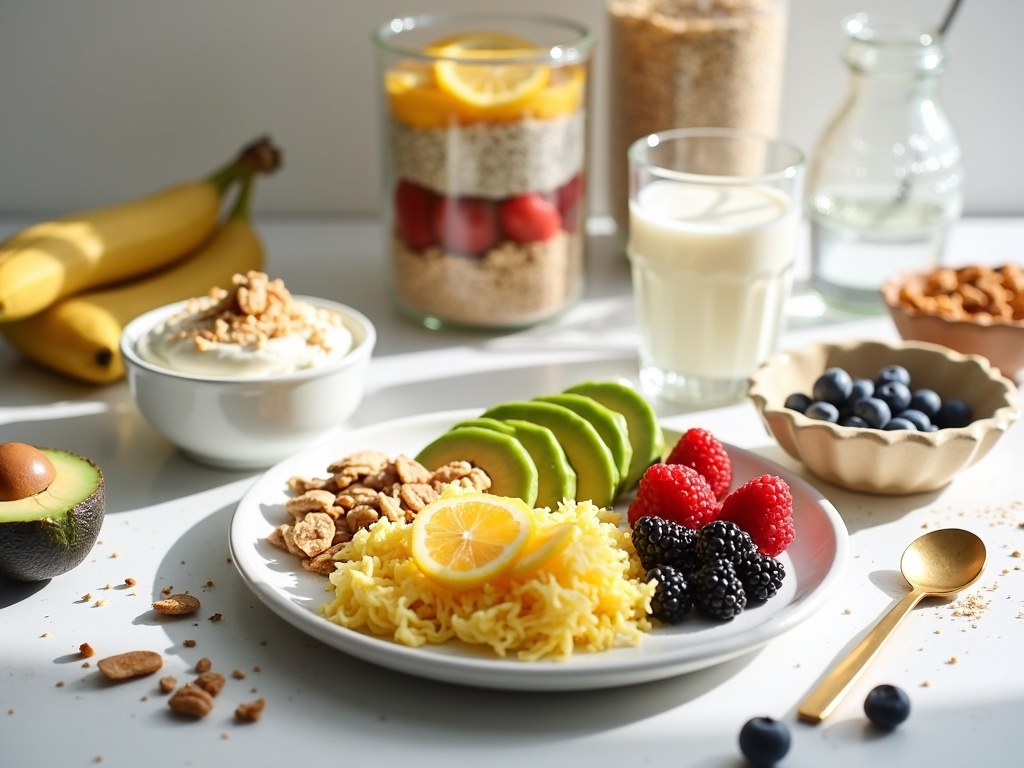
Sources:
CDC
American Journal of Clinical Nutrition
MDPI Nutrients
Harvard Health
Taylor & Francis Online

